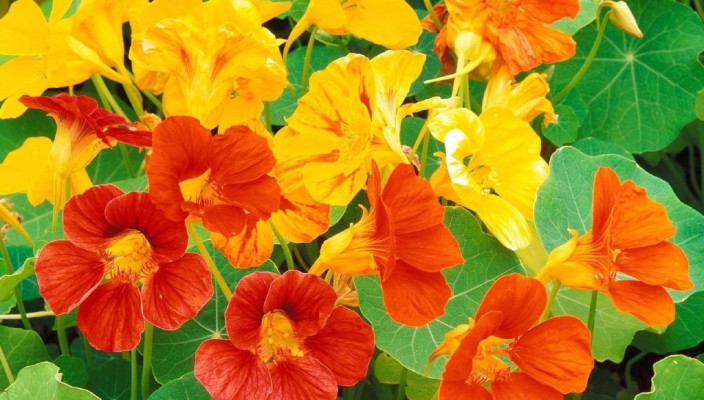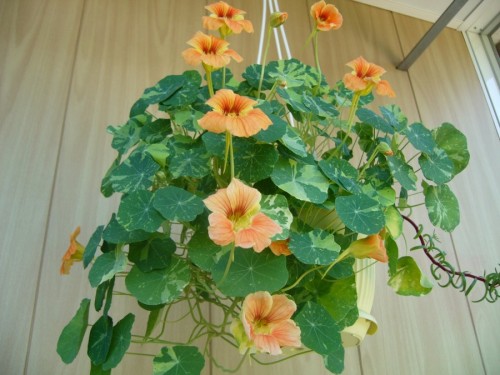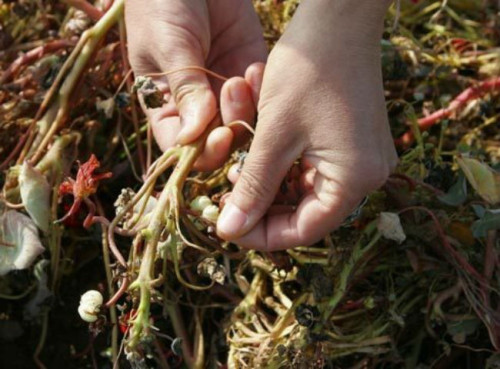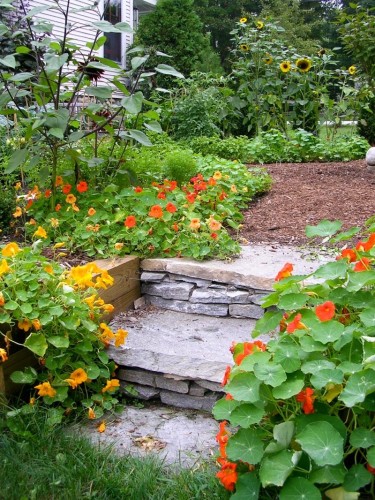Flowers use flowers to decorate the plots, they reflect the territory and raise the mood. When choosing a certain plant orient to its beauty and ease of care. Therefore, there are popular cultures. For example, the grown nasturtium in the photo can be found in the most unexpected places. It can be seen in the garden, on a flowerbed or balcony.
Plants varieties are so diverse that individual species are planted along the walls for decorating a large area, while others are happy with the color on the site. Thanks to the appearance of the flower and its shape, another name is Kapuchin. In addition to the bright decorative effect, Nasturtium gives a pleasant fragrance, it is extensively used in medicine.
Features of culture
Registered types of Kapuchin differ not only by appearance, but also sizes. Directly flower can have 5 shades: yellow, orange, red-brown, lilac, salmon. Also there are two-color copies with stripes or spots.
For growing colorful nasturtiums you need to know the requirements of culture:
- the soil must be moderately fertile with a weakness medium. Drainage is a mandatory component of the mixture due to the characteristics of the root system. At the same time, if the soil is rich in organic inclusions, the greens will prevail over the color. And with the lack of fertilizer, the leaves decrease in the amount, the color rarely appears on the bare stem;
- kapuchin is needed in a half or sunny area, because he loves light. In addition, it is important for the absence of strong wind and drafts;
- culture does not tolerate freezing, so they grow nasturtium from seeds at a temperature of more + 7̊s;
- watering should be sufficient during the development of the plant. And after the nasturtium blooms, it is necessary to reduce the flow of water to avoid the root system's rotary processes.
Collection of material
Capuchin planting material can be bought in the store or collect yourself. As the color is removed, the plant seeds ripen. This occurs approximately 40-50 days after the fond of the leaves. Seeds are independently removed after ripening, so you need to have time to collect them. Material retains its properties for 4 years. If many seeds are not required, then the flowering period is prolonged by removing the tagged parts.
Immediately before sowing, the seeds are poured with hot water (the temperature should be from + 40 ° C to + 50̊С). After 20 minutes of such treatment, the material is left for a day in water. After that, you can send seeds to the ground.
Growing Nasturtium
Capuchin cultivation can be held from seeds in two versions:
- the reckless method, in this case, sowing takes place at the end of May. Then the air temperature should not be descended below 0̊. Because with severe cooling, young plants die. For the landing, they make holes with a depth 2 cm, they lower 2-3 seeds. For the development of the root system, the distance between the wells should be about 30cm. In order to accelerate the development of shoots, you can pour the holes with warm water before sowing (40-50 ° C). From above, the plot is covered with nonwoven material, polyethylene is additionally used for the night. At the same time, watering is carried out exclusively warm water. The insulation layer is fully removed in the first half of June;
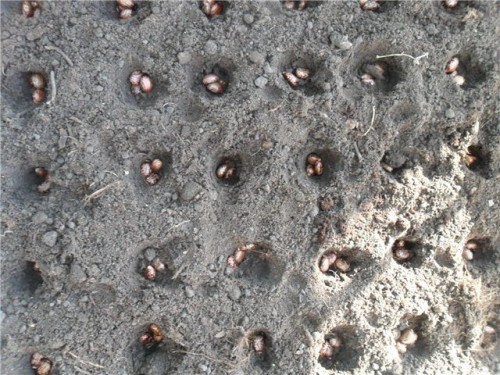
- with the help of seedlings. Then growing a curly nasturtium from seeds can be held in April. For this, the material is searched into the same wells, but immediately in separate pots. Then, to prevent violations of the root system, the plants are planted with a lump of land. If the temperature is held in the room 20-22̊s, the sprouts appear after 10 days. After germination, the ambient temperature should be reduced to + 18̊. It is important to ensure a sufficient amount of light - the rate of adaptation of the plant in the open soil depends on it. In the first half of June, seedlings are planted, the distance between the wells should be 20-40 cm. If the seedlings were in peat cups, then with them and buried to the ground. For emergency adaptation, it is advisable to strengthen the seedlings at night with polyethylene.
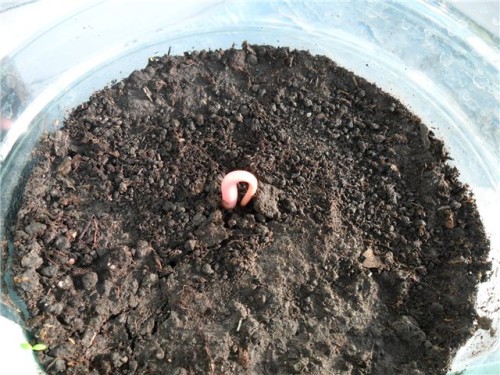
The reckless technique is considered an optimal option due to the absence of habitat change. Accordingly, young plants are less susceptible to disease. The only drawback of technology is to get late flowering. When using seedlings, the nasturtium blooms after a month and a half, this period continues to autumn frosts. In the photo you can see all the stages of growing nasturtiums from seeds. 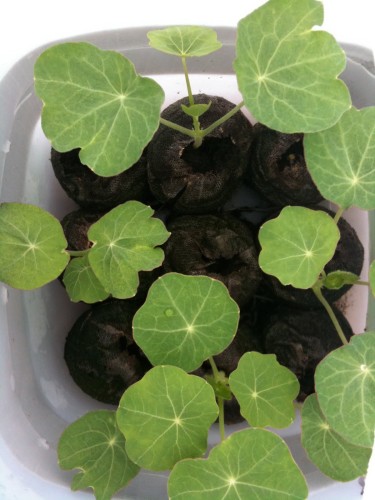
Caring for Nasturtium
Watering plants and suction of the soil - the main care for cabins. We can not fight with weeds if the garden is mounted when sowing or disembarking colors. For the development of leaves, the plant must be abundantly water, but when color set, water is required only for soil moisturizing. If you continue to regularly pour a nasture, then the lush greenery will not be visible in color.
In addition, to extend the flowering period, it is necessary to remove dried parts of the plant. To collect seeds for one year, it is enough to leave a few barriers, the rest - to eliminate timely.
Fertilizers to enter the soil is optional, but if desired, it is possible to feed the potash-phosphoric substances weekly. Continue cutting to a period of blossoms of nasturtium. For Kapuchin, nitrogen mixtures are not used.
After the end of flowering, the plant needs less and less moisture, so watering is gradually reduced. In the fall, the tops are already removed, burn it. And the plot is drunk and prepared for the next season.
Thanks to a strong smell, the cultivation of the curling nasturtium helps to get rid of such pests like a colorado beetle, cabbage, whitefly and aphid. 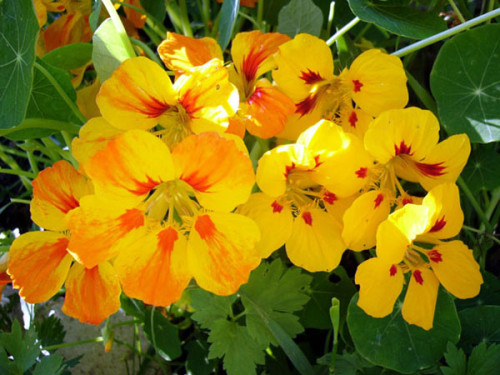
Despite the simplicity of nasturtium care, there are diseases affecting the plant. The most common option is a bacterial fading, in which the leaves be risen near the ground, then the disease moves to the entire culture. In addition, a gray rot is often manifested on the leaves. Then, dry brown spots appear on a monophonic greenery. Black or brown enclosures may also appear - this is also a sign of fungus. In such cases, the infected nasturtium is removed and burned, and healthy individuals are treated with chemicals.
When viewing the next species, you can estimate the beauty of the varieties of nasturtiums:

